SEO copywriting: A beginner's guide
-
Abdul Wadood
Are you interested in learning about SEO copywriting?
If YES, you have arrived at the right place. In this guide, I have explained about SEO copywriting in detail.
Let’s get into it!
First, what is SEO?
SEO refers to “Search Engine Optimization”.
In layman terms, SEO refers to optimizing the content based on the search query.
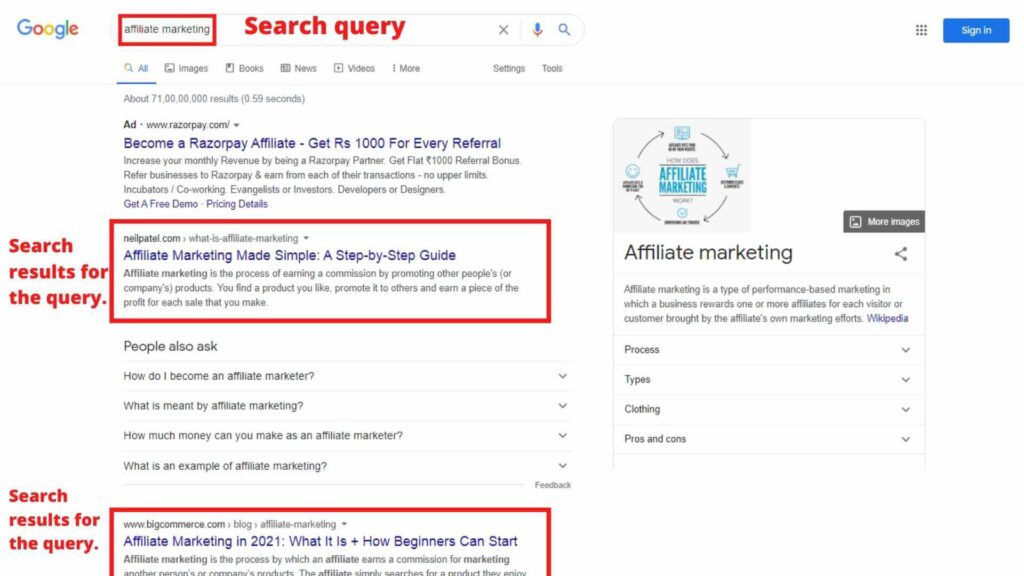
As you can see, these are the results we got for the keyword “affiliate marketing”. The websites that are ranking for this keyword may have optimized their content for the keyword “affiliate marketing”, and this is one of the factors that lead them to rank high on the search results.
Apart from the keyword optimization, other factors that influence a website’s ranking are:
- High-quality content
- Backlinks
- Domain authority
- Loading speed
- Internal and external links, etc.
Topics in this guide:
What is SEO copywriting?
In simple terms, SEO copywriting refers to optimizing the content both for Google Search Engine and the readers.
Now, I will elaborate on the above point.
Say you are writing a blog with the focus keyword as “affiliate marketing”. If you are writing the blog solely for Google, then your blog will look like the image below.
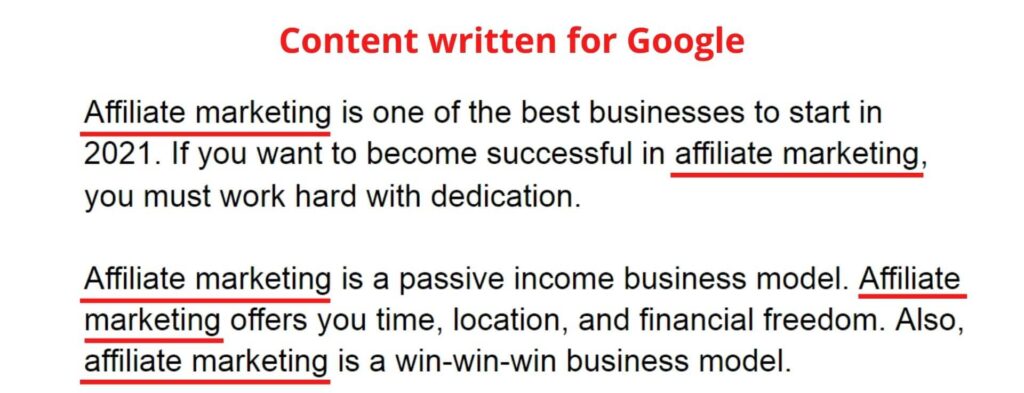
As you can see, the content is looking way too artificial!
Similarly, if you are writing the blog solely for the readers, it will not be keyword optimized.
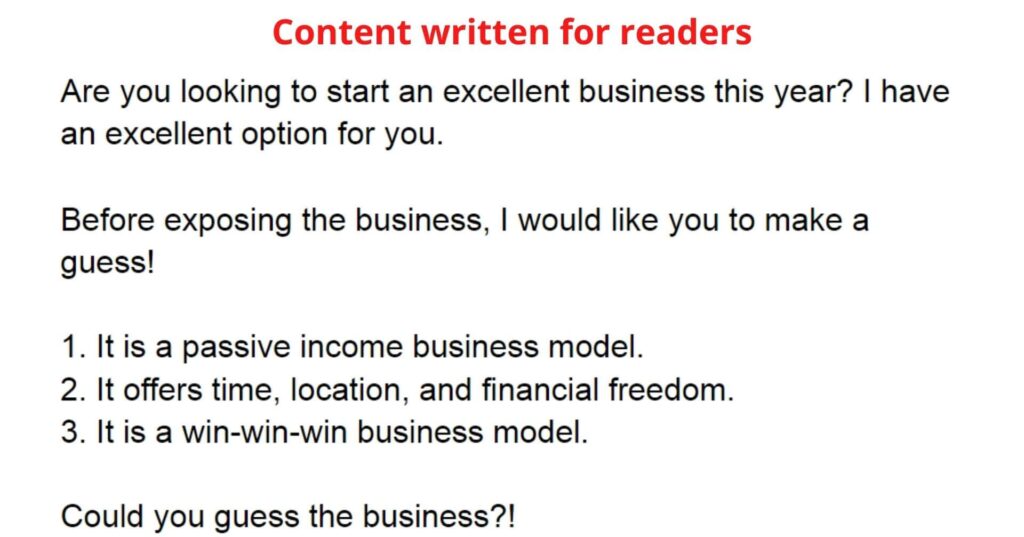
In SEO copywriting, we combine both the conditions and make the blog both keyword optimized and reader-friendly.
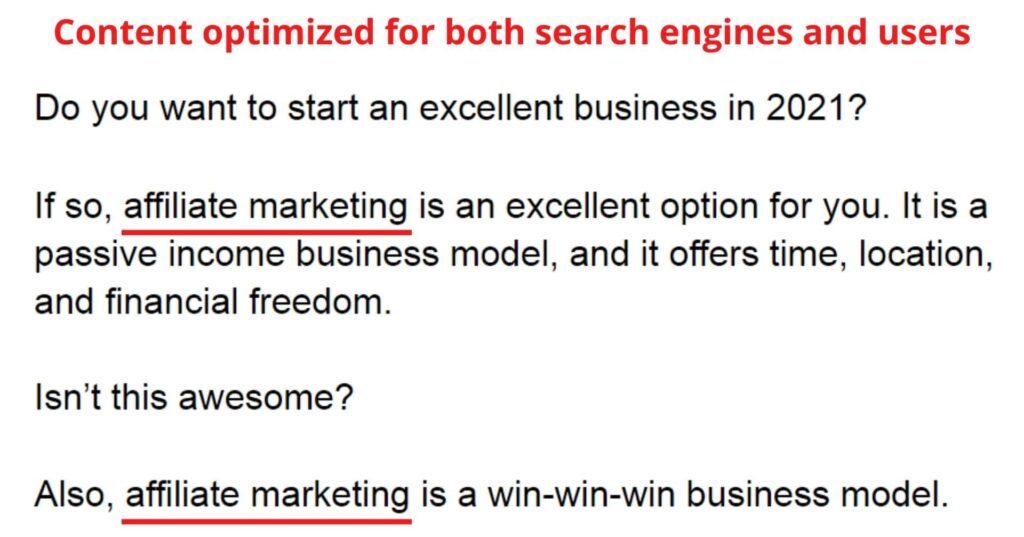
I hope you have clearly understood the concept of SEO copywriting.
Advantages of SEO copywriting
The following are the advantages of SEO copywriting.
1. It can help to increase backlinks to your website
As you all already know, backlinks are one of the major factors that influence a website’s ranking on the search engine.
There are several ways to build backlinks such as, broken link building, requesting sites with high domain authority to provide backlinks, etc. But, if you follow the SEO copywriting technique correctly, people will provide backlinks to your website automatically because your content provides value to their audience.
2. Increases your social shares
Since your content is reader-friendly instead of being robotic, and also since it provides value to the readers, there is a high chance for the people to share your blog.
This will make people aware of your brand, increase traffic to your website, and most importantly, increases your revenue.
3. Organic traffic
Since your content will be well optimized for Google’s algorithm, and it will reader-friendly, over time, your blog will rank high on Google. This will, in turn, increase the traffic to your website.
By now, I hope that you have understood the importance of SEO copywriting. Now, we will get into detail about the concept.
Rules of SEO copywriting
Ok!
To succeed in SEO, it’s highly essential that you follow the rules. Below I have listed the rules that you must follow to be a successful SEO copywriter.
1. Avoid keyword stuffing
What is keyword stuffing?
Keyword stuffing is a spammy technique in which the keywords are repeated to make the blog rank higher on Google.
Does it work in 2022?
NO! A big NO!
Does it used to work before?
Several years back, this spammy technique might have worked to some extend!
Why it does not work?
Nowadays, both the search engine and people have advanced.
Many people know to differentiate between content that is legit and spammy. Keyword stuffing will make your content look robotic, and this will make the people skip your website.
Also, using spammy techniques such as hiding the focus keyword by reducing the font size may make Google remove your site from its index.
2. The words should be easy to understand
Your content is going to be consumed by the users. So, for them to understand, you must use words that are easy to read.
Many beginners think they should use advanced language to stand out from the competition. No guys! That’s not how it works!
Your page will be read by both native English speakers and foreigners. So, the words you use should be simple so that foreigners can understand your content.
3. Optimize your headings
First, including keywords in the headings (H1, H2, H3, H4) doesn’t influence the ranking of your website much.
But, using the right headings will make people understand the structure of your content better.
Of course, using ‘H3’ for the main heading and ‘H1’ for the subheading will make you seem unprofessional. So, make sure to use the right headings at the right places!
Always be sure to make the title of your content attractive because that’s the first thing people will see.
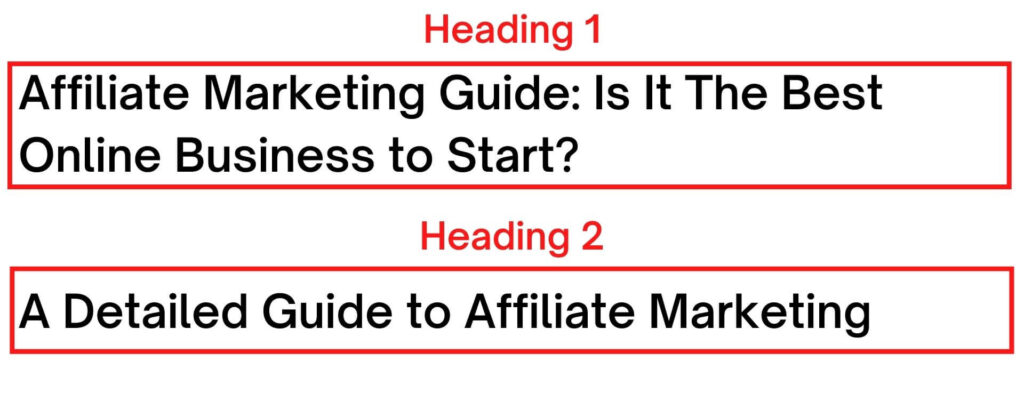
As you can see, the first heading is capable of driving a lot more clicks than the second one because it arises a sense of curiosity for the readers. In general, the more clicks you get, the better will be your website’s traffic.
4. Optimize your meta description tag
Second to the heading, before clicking on the blog, people will see the meta description.
Here is an example of a good meta description.

As you can see, the meta description should consist of worthy keywords, and it should be relevant to the content delivered on a page. Also, make sure to use attractive words that can drive more clicks.
5. Make sure the pages load fast
If you want a page to rank high on Google, it must load fast.
I would like to ask you a question.
During your browsing session, will you wait for a webpage to load more than 5 seconds? Most probably NO, right?!
A study by Akamai revealed these stats:
- 40% of people will abandon a website if it takes more than 3 seconds to load completely.
- 47% of end-users expect a website to load in 2 seconds or less.
If you have well implemented the SEO copywriting strategy on the content, but if you fail to optimize the page loading speed, trust me, the effort you put into creating the content is almost useless.
Tips to speed up your website
1. Remove unwanted content: You can use tools like Google PageSpeed Insights to check the loading speed of your page. Once the test is complete, you can scroll down to see the suggestions. Use these suggestions to remove unwanted codes, data, etc., from the page.
Trust me, this technique works pretty well!
Also, if you are having a WordPress website, delete the plugins that you don’t use. This can help in speeding up your website.
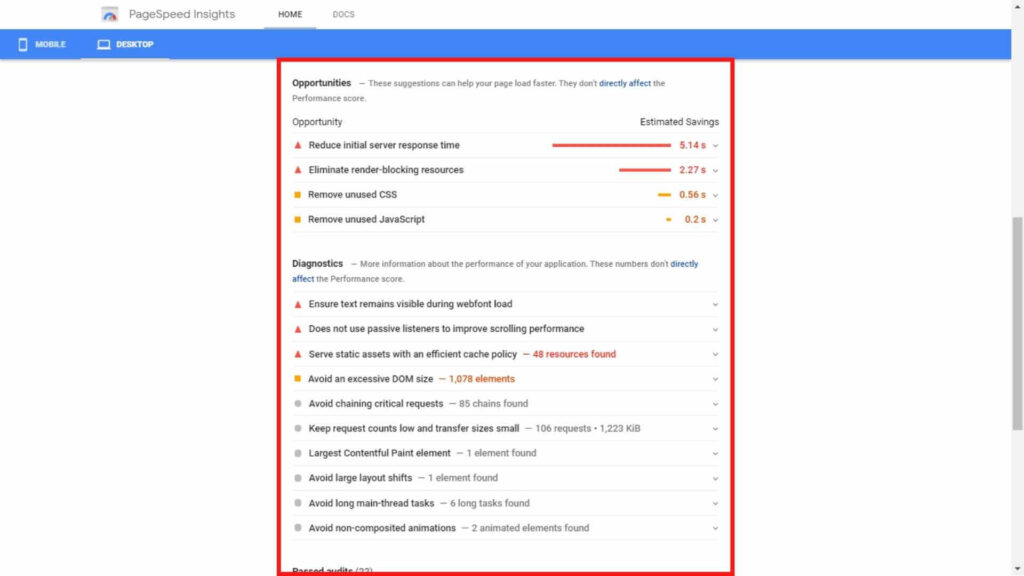
Trust me, this technique works pretty well!
Also, if you are having a WordPress website, delete the plugins that you don’t use. This can help in speeding up your website.
2. Compress the images: As you already know, high-quality images are of very large sizes, and they can slow down a page by a huge margin. To avoid this, make sure to compress the images before uploading them.
There are several free tools like tinypng.com, etc., that you can use to compress the images.
3. Use a good and reliable hosting provider: Hosting providers play a major role in determining the speed of your website. Some of the best hosting providers are HostGator, and Liquid Web.
If you are a beginner, and if you have a tight budget, I suggest you opt for the Shared Hosting Plan offered by HostGator. Shared Hosting can be a good option for a website having less than 11,000 monthly visitors.
If you have a high budget, or if your website drives high traffic (more than 11,000/month), I suggest you opt for cloud or dedicated hosting offered by Liquid Web.
6. Attractive website
Apart from good content, the website’s design plays an important role in making people read your blog.
Also, you need to make sure that your website is optimized for smartphones. Because, nowadays, most people consume content on the internet from their smartphones.
You can check whether your website is optimized for smartphones using Google’s Mobile-Friendly Test.
Steps to achieve a content with good implementation of SEO copywriting strategy
- Plan what your content should be about.
- Start researching the keywords to use on that content. You can use tools such as Ubersuggest, Ahrefs, SEMrush, etc., for keyword research.
- Once you finalize the keywords, search on Google for the pages ranking for similar keywords.
- Analyze their content. Look for the information they have provided in the content.
- Once done analyzing, plan how your content is going to be. Always try making your blog more informative than your competitors.
- Now, start typing the content.
- Make sure to include images and statistics in between the text area. This will help in keeping the readers engaged.
- In my opinion, for a blog to rank high on Google, it needs to contain 2000+ words.
- Once you have written the blog, make a thorough check of the content. Check for grammatical errors, spelling mistakes, etc. Also, make sure to check SEO-related things like keyword density (number of times the focus keyword appears in the content), etc.
How to perform keyword research?
Ok! Now, we will discuss the topic of performing keyword research.
As you all already know, keywords play a major role in determining the success of a page.
From my experience, “An excellent keyword-optimized page with average content has a better ranking potential compared to a below-average keyword-optimized page with excellent content.”
There are various tools that you can use for keyword research. Some of the best tools are Ubersuggest, Ahrefs, and SEMrush. But, all of these are premium tools and they can be quite expensive for beginners to afford.
I have an excellent solution for this issue!
You can use a freemium tool called Google Keyword Planner. It is a tool for those who advertise on Google. So, unless you spend money on Google, you won’t see the full statistics. But, since the searches are unlimited, you can gather ideas about various keywords and their search volume and competition.
Here is the research done using Google Keyword Planner for the keyword “what is affiliate marketing” as a non-advertiser.

Here is the research done using Google Keyword Planner for the keyword “what is affiliate marketing” as an advertiser.
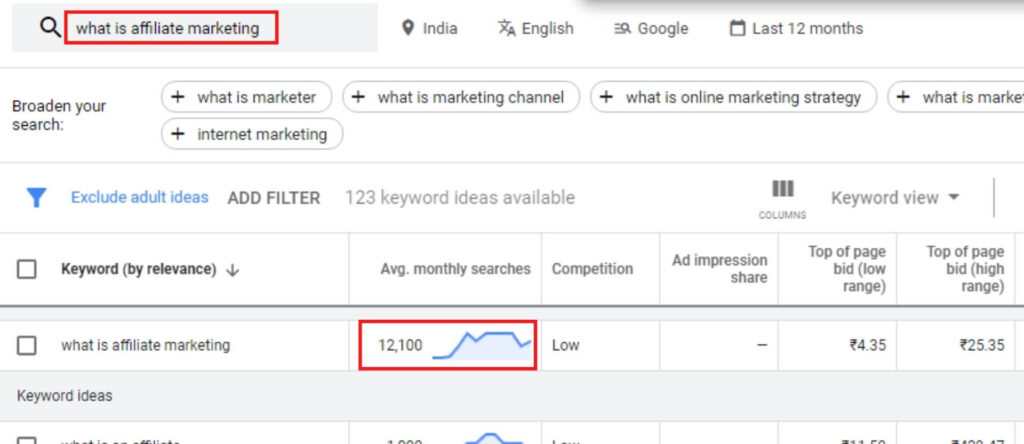
I hope that you have understood the difference between the Google Keyword Planner for advertisers and non-advertisers.
Ok!
Once you shortlist the keywords, use tools that offer limited free searches like Ubersuggest, Wordtracker, etc., to get complete information about the shortlisted keywords.
Now, note down the keywords along with their details on tools like Microsoft Excel or Google Sheets.
Here is the diagrammatic illustration of the free keyword research process.
Step #1: Perform keyword research using Google Keyword Planner.
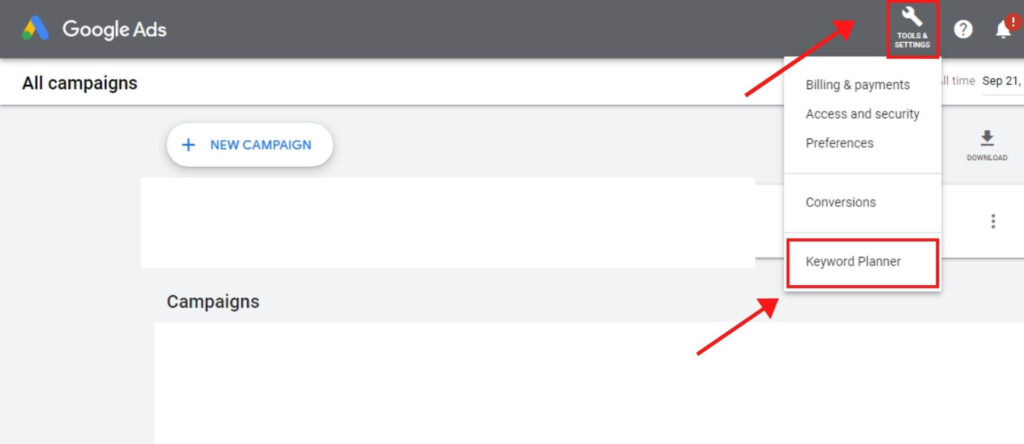
Step #2: Shortlist the good keywords.
P.S.: I have selected India as the target country, and English as the language.
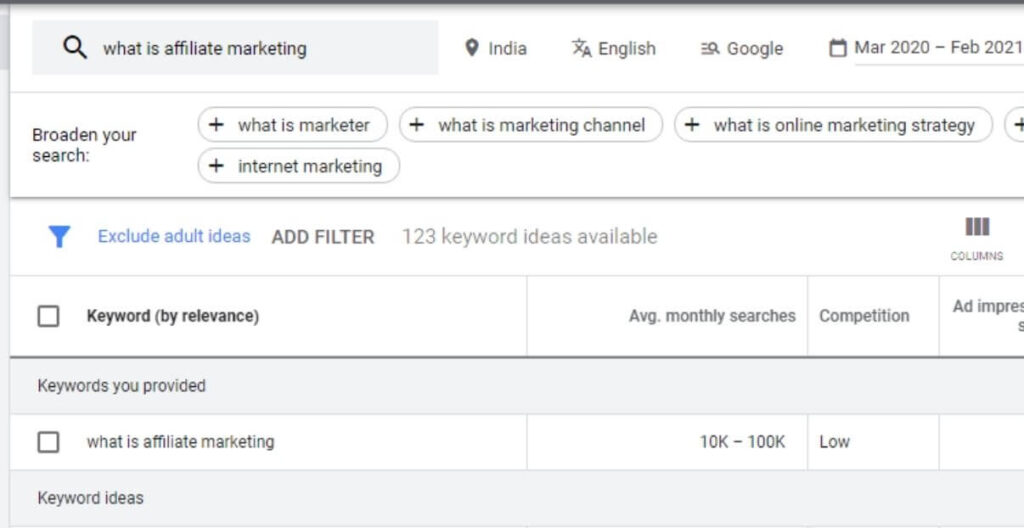
Step #3: Use the limited searches offered by premium tools like Ubersuggest, Wordtracker, etc, to get the complete information about a keyword
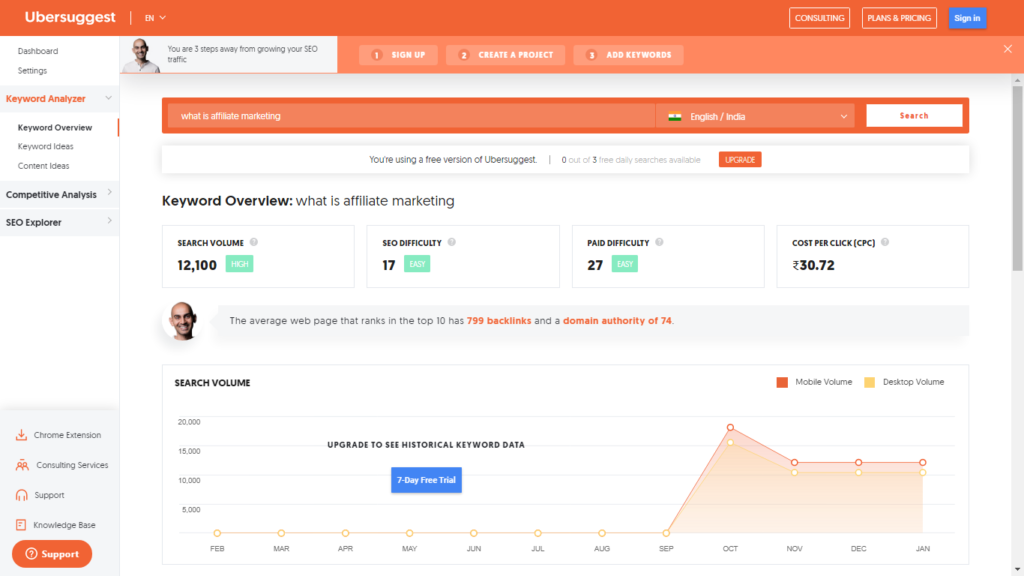
Step #4: Note down the keywords on a spreadsheet
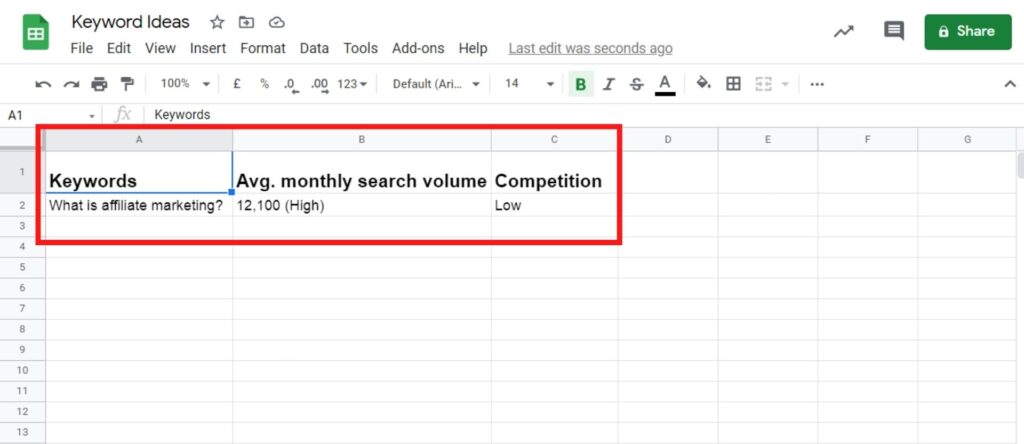
I hope that you have clearly understood the process of performing free keyword research.
If you are using a premium tool for keyword research, the process will be a lot easier for you.
Conclusion
SEO copywriting is highly essential for any blogger or SEO specialist wanting to rank a page higher on Google. Failing to use the right SEO copywriting techniques will reduce the potential of your page by a huge margin.
SEO copywriting can take time to master, but by practicing everyone can become a good SEO copywriter.
Also, in SEO you should not expect overnight results because it’s a process. The process takes time to build, but once built, you can achieve the things that you have dreamt of having before!
I hope that you have clearly understood SEO copywriting, and I hope that you have also understood the importance of it.
Let’s go through a quick recap of the guide!
- In SEO copywriting, we make the content optimized for both ranking on the search engine and the users.
- Using the SEO copywriting strategy effectively can help to increase backlinks, social shares, and organic traffic.
- In all cases, you must avoid keyword stuffing. Keyword stuffing is a spammy technique that no longer works in 2022.
- Frame the content using words that are easy to read and understand.
- Optimize your headings and meta description tags.
- Make sure the pages load fast.
This is the end of this detailed guide. If you have any questions regarding SEO copywriting, let’s connect in the comment section below.
